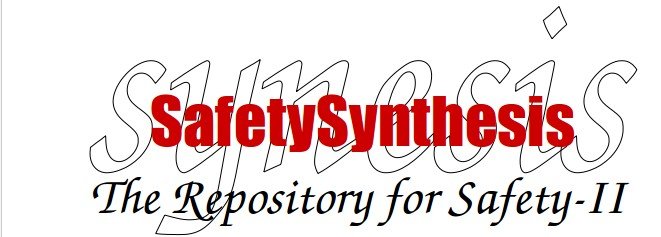(c) Erik Hollnagel, 2020
On Monolithic Explanations
The preference for single and simple explanations seems to be a common trait in the human quest to understand what goes on. This can be found in all fields of activity, politics, ethics, law, biology, history, finance, and of course in industrial safety. In this case it is easily illustrated by the well-known proposal for three stages of safety thinking. Each stage was dominated by a single type of cause – technology, human factors, and organisational culture, respectively – which throughout the stage was accepted as the likely explanation for whatever went wrong. In other words, people used a single explanation, a single cause, or a single solution to solve a host of problems. Solutions, or explanations, of this nature can be called monolithic, in the sense that the constitute a single idea, a single concept - a unitary explanation so to speak.
Monolithic explanations are attractive because they appear to solve two problems at the same time. The first problem is to find a workable solution to the current problem so that we can be safe. The second problem is to set the mind at ease so that we can feel safe. In cases where we cannot actually be – or become – safe because we do not have an articulated understanding of why things happen, we can at least try to feel safe – or try to make others feel safe – even though it may mostly be an illusion. This is not least the case for the current favourite among monolithic explanations – Complex Adaptive Systems.
Monolithic explanations are used in two different ways. One is to explain (adverse) outcomes as due to the presence of some cause. The other is to explain (adverse) outcomes as due to the absence of some cause. In each case the cause is seen as the only, or at least the dominating, reason why something has happened. Examples of the former use are human error, workload, fatigue, etc., illustrated by statements such as “the accident was due to human error”. Examples of the latter use are “situation awareness” and “safety culture”, illustrated by statements such as “the accident was due to a lack of safety culture”. (As an aside, human factors people have shown remarkable ingenuity in inventing causes where their absence could explain why something happened. In other words, a contrafactual conditional.)
Monolithic explanations represent a social convention, almost – or exactly – like an ETTO. They are efficient because they offer a single and simple solution to a problem, but they are by the same token not thorough. This leads to the idea that safety culture, much like safety itself, is a social construct. (A social construct is an idea or notion that seems obvious or even inevitable to people who accept it but which on closer inspection is essentially a mutually accepted invention of a community or social group.) Causes are clearly social constructs. This is the case for simple physical causes, since they represent first stories. And stopping after first stories is a social agreement or construct. But it is also the case for more complicated explanations, especially when they refer to something intangible such as a human error or a sociological (or organisational) phenomenon such as an 'X' culture..
Monolithic explanations are characteristic in safety thinking but can obviously be found elsewhere – if not everywhere. In relation to safety, it is necessary to keep in mind that monolithic explanations are an inextricable part of Safety-I. The focus on adverse outcomes and the practical and psychological need to find their causes naturally favour single and simple explanations. In relation to safety-II, where the focus is on understanding why and how things go well, there is little if any need of monolithic explanations. In the case of safety culture, for instance, it is clear that it does play a role in human and organisational performance – even if there is no clear understanding of how. But it is equally clear that it cannot be the only explanations or the only cause. Human and organisational performance is determined by many different factors, interests, and motives. Some of these are transient and change from moment to moment while others are more stable and may play a role across a variety of situations and conditions. Accounting for the dynamics of human and organisational performance, not least over extended periods of time, is a challenge to Safety-II and to the management of organisations in general. Resilience engineering and synesis, among others, try to answer that challenge, but not by reducing it to a question of finding yet another monolithic explanation.
